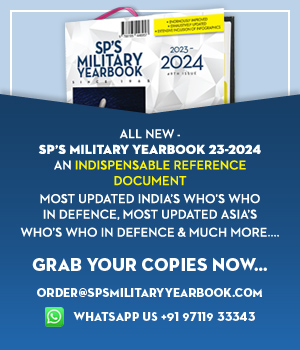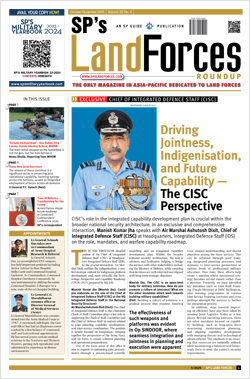INDIAN ARMED FORCES CHIEFS ON OUR RELENTLESS AND FOCUSED PUBLISHING EFFORTS

The insightful articles, inspiring narrations and analytical perspectives presented by the Editorial Team, establish an alluring connect with the reader. My compliments and best wishes to SP Guide Publications.

"Over the past 60 years, the growth of SP Guide Publications has mirrored the rising stature of Indian Navy. Its well-researched and informative magazines on Defence and Aerospace sector have served to shape an educated opinion of our military personnel, policy makers and the public alike. I wish SP's Publication team continued success, fair winds and following seas in all future endeavour!"

Since, its inception in 1964, SP Guide Publications has consistently demonstrated commitment to high-quality journalism in the aerospace and defence sectors, earning a well-deserved reputation as Asia's largest media house in this domain. I wish SP Guide Publications continued success in its pursuit of excellence.
- All about HAMMER Smart Precision Guided Weapon in India — “BEL-Safran Collaboration”
- US to sell $93 million precision artillery, Javelin and Excalibur projectiles to India
- US to sell $93 million precision artillery, Javelin and Excalibur projectiles to India
- India, Germany deepen defence ties as High Defence Committee charts ambitious plan
- True strategic autonomy will come only when our code is as indigenous as our hardware: Rajnath Singh
- India-Israel Joint Working Group Meeting on defence cooperation to boost technology sharing and co-development
- G20 Summit: A Sign of Global Fracture
Strengthening Strategic Ties — India-Australia Defence Relations on the Rise
India and Australia have emerged as strategic partners, deepening their defence and security ties to uphold a stable, rules-based regional order. The visit of Lt General Simon Stuart, Chief of the Australian Army, to India signifies strategic military exchanges. However, the military-industrial collaboration is required to take it further in real terms from now on.
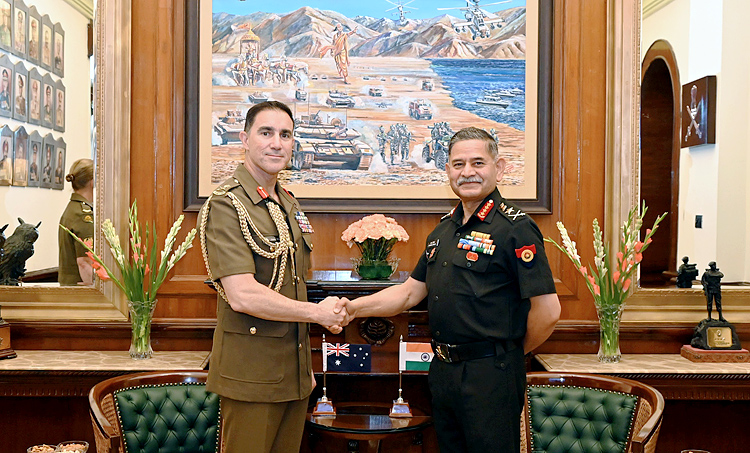
The Indo-Pacific region has become the fulcrum of 21st-century geopolitics, where partnerships and power dynamics are rapidly evolving. Within this context, India and Australia have emerged as strategic partners, deepening their defence and security ties to uphold a stable, rules-based regional order.
The visit of Lt General Simon Stuart, Chief of the Australian Army, to India (August 10-14, 2025) highlights deepening India-Australia Army ties within a broader strategic partnership. It broadly incorporates areas such as joint exercises like AUSTRAHIND, training exchanges, and defence industry collaboration.
The visit of Lt General Simon Stuart, Chief of the Australian Army, to India (August 10-14, 2025) highlights deepening India-Australia Army ties within a broader strategic partnership.
The defence relations are progressive on the back of the Comprehensive Strategic Partnership (CSP) launched in 2020, which initially provided a framework for high-level military cooperation.
Initiatives such as the Young Officers Exchange Programme and annual Staff Talks foster operational synergy and leadership trust. With growing interoperability and shared Indo-Pacific goals, the visit reinforces India's role as a credible defence partner. It now signals for enhanced bilateral military cooperation, equipment manufacturing and joint strategic cooperation on multiple fronts.
A Maturing Strategic Partnership
India and Australia share a broad-based bilateral relationship, encompassing economic, diplomatic, and security domains. However, it is in the area of defence cooperation that the partnership has gained momentum in recent years. As two democracies with a vested interest in a free and open Indo-Pacific, both countries have recognised the strategic imperative of working closely on military and maritime security issues.
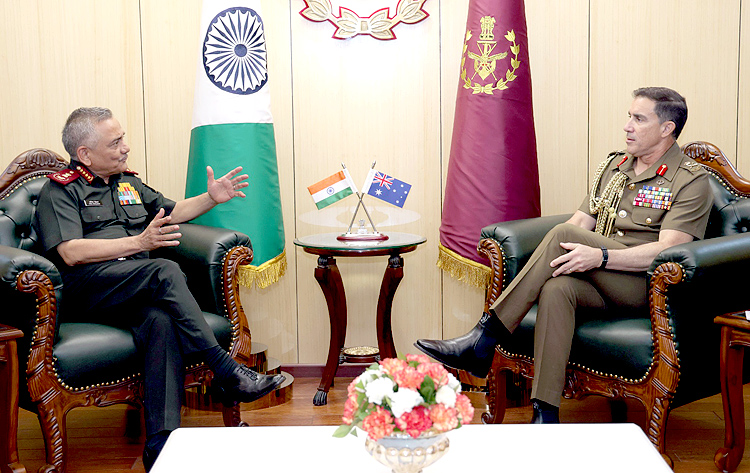
The strengthening of defence ties comes from their common view of the rapidly shifting security situation in the Indo-Pacific. Both nations see that China's fast military upgrades and actions-like heavy building up its military in the South China Sea and ramping up naval patrols in the eastern Indian Ocean-create serious challenges for peace in the region.
A series of navy and air force manoeuvres by the Chinese military in the South China Sea has been a matter of great concern to Australia has labelled it as dangerous. Besides many naval skirmishes, Australia faced another Chinese aggression during the Royal Australian Air Force (RAAF) P-8A Poseidon maritime patrol aircraft's routine surveillance patrol in international waters in the South China Sea. According to Australia's Defence Minister Richard Marles, a Chinese PLA J-16 fighter jet released flares within 30 metres (100 feet) of the RAAF aircraft, leading to frequent tension.
The strengthening of defence ties comes from their common view of the rapidly shifting security situation in the Indo-Pacific.
To begin with, the Defence Policy Talks (DPTs) are formed to develop the working-level mechanism. The DPT, held in March 2025 in New Delhi, broadened on maritime domain awareness, reciprocal intelligence and information-sharing, and industry collaboration—particularly in naval shipbuilding and advanced surveillance systems.
The 2020 signing of the Mutual Logistics Support Agreement (MLSA) was a key development, allowing reciprocal access to military bases for logistics support. This has significantly enhanced interoperability and preparedness, enabling joint missions and exercises across the Indo-Pacific region.
Military Exercises: Strengthening Interoperability
Joint military exercises have become a cornerstone of India-Australia defence engagement. One of the foundational AUSINDEX naval exercises, conducted regularly since 2015, has grown hi -high-calibre military exercise with anti-submarine warfare, air defence, and high-end naval operations now part of the agenda.
Building on such foundational military exercises, for the first time, India participated in Talisman Sabre 2025, Australia's largest multinational warfighting exercise and one of the biggest in the Indo-Pacific. The 11th edition of Sabre 2025 had more than 35,000 troops from 19 countries, making it the largest in the exercise's history.
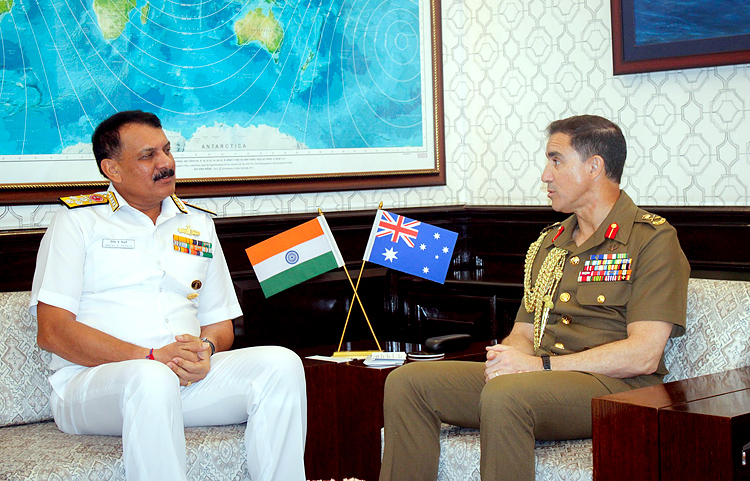
In 2025, there has been a good deal of discussion in industrial partnerships, with Australian shipbuilders looking to team up with Indian micro, small, and medium enterprises (MSMEs). Together, they are working on producing patrol boats and setting up Maintenance, Repair, and Overhaul facilities for naval ships. Crucially, India and Australia are also discussing technology transfer agreements, focusing on creating AI-powered maritime surveillance systems and autonomous underwater vehicles.
Meanwhile, both have also built formal exchanges in science and technology, concentrating on autonomous systems and secure communications for networks that manage command, control, and intelligence sharing, as well as improving satellite intelligence-sharing methods.
The 2020 signing of the Mutual Logistics Support Agreement (MLSA) was a key development, allowing reciprocal access to military bases for logistics support.
India's participation in Australia's Exercise Pitch Black and Australia's role in India's multilateral MILAN naval exercise further highlight the shared commitment to building joint operational capabilities. The tri-service Exercise MALABAR, under the QUAD mechanism, where Australia participates alongside India, the US, and Japan, highlights the growing strategic alignment among Quad nations.
These exercises not only improve interoperability but also send a strong message to the broader region about the unity and preparedness of like-minded countries against coercive and destabilising actions in the Indo-Pacific.
Australia's Army Chief Visit: A Strategic Signal
The August 2025 visit of Lt General Simon Stuart to India is both timely and symbolically significant. Coming at a time when tensions continue to simmer in various parts of the Indo-Pacific, this visit reflects the urgency with which both nations are approaching their defence cooperation.
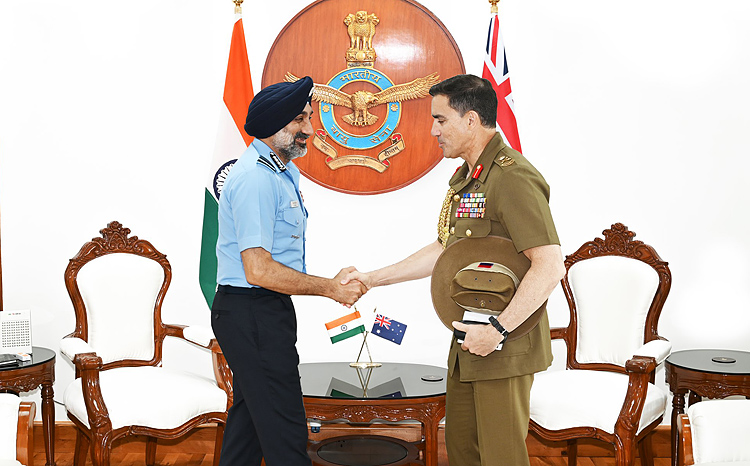
Discussions reportedly focused on enhancing joint military training, technology sharing, maritime domain awareness, and deepening engagements between the respective defence industries. The visit also included meetings with Indian Defence Minister Rajnath Singh and Chief of Defence Staff General Anil Chauhan, underscoring the political will behind the military engagement.
General Simon Stuart's multiple engagements with Indian military leadership serve as a reaffirmation of Australia's recognition of India as a key pillar of the regional security architecture. It also aligns with Australia's Defence Strategic Review, which identified India as a top-tier security partner.
Way forward: Needs military-industrial collaboration
While the defence relationship is growing rapidly, there remain challenges such as differing procurement systems and limitations in joint defence production. Bridging these gaps requires persistent diplomatic effort, structured dialogues, and trust-building mechanisms.
General Simon Stuart's multiple engagements with Indian military leadership serve as a reaffirmation of Australia's recognition of India as a key pillar of the regional security architecture.
Moreover, given China's increasing assertiveness in the South China Sea and along India's northern borders, India and Australia's defence cooperation will help both countries to navigate through the regional geostrategic areas while standing firm on principles of sovereignty, maritime freedom, and international law.
India and Australia are no longer peripheral players in each other's strategic calculus. With shared democratic values, common security concerns, and complementary capabilities, both nations are poised to play a central role in shaping the Indo-Pacific's security environment.
Australian Army Chief's visit symbolises more than just diplomatic niceties — it reflects the maturing of a defence relationship that is likely to be a cornerstone of regional stability in the years to come. However, there are expectations that the security partnership must involve military-industrial collaboration, which has yet to happen.
Manish Kumar Jha is a Consulting & Contributing Editor for SP's Aviation, SP's Land Forces and SP's Naval Forces and a security expert. He writes on national security, military technology, strategic affairs & policies.




